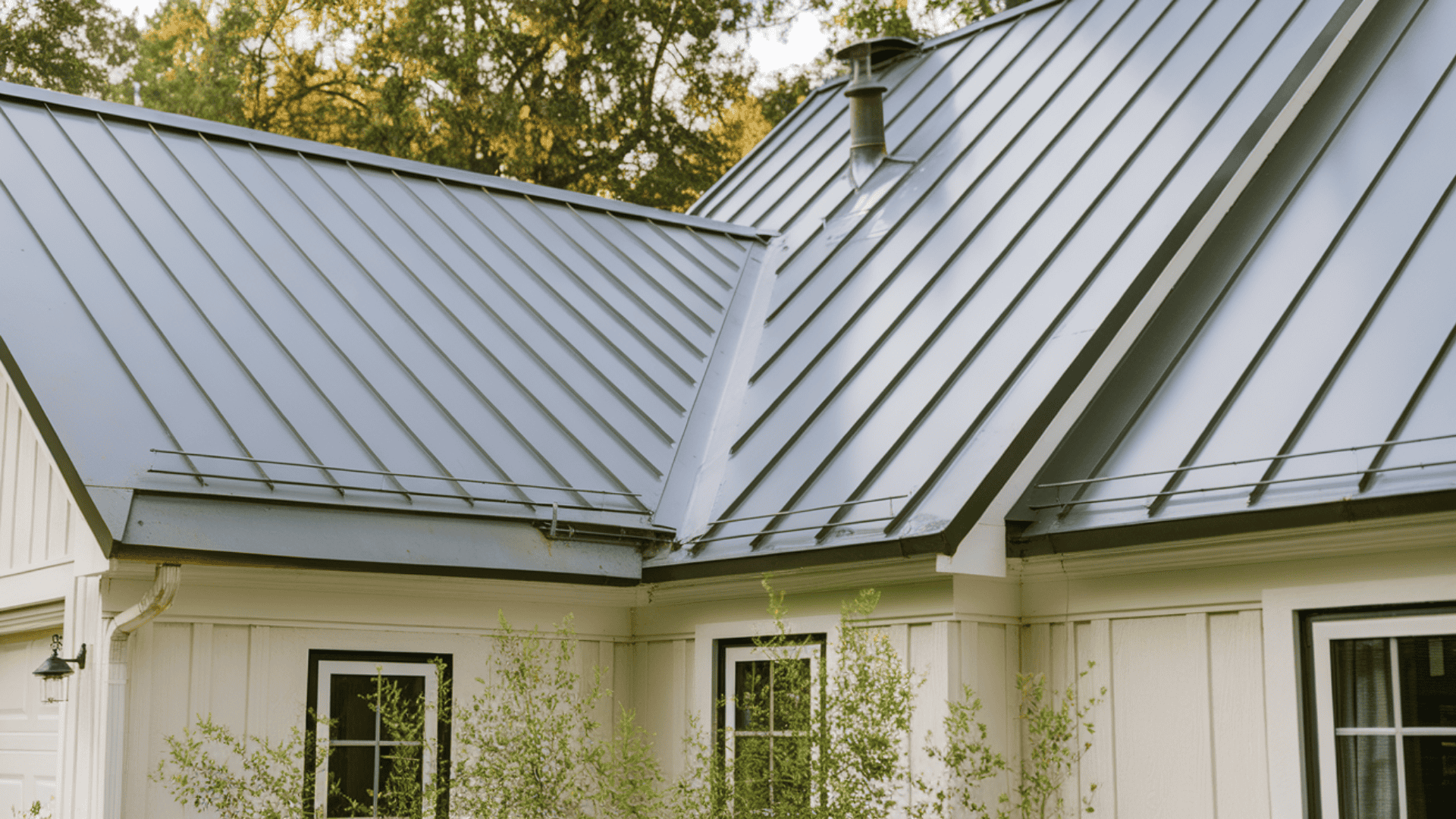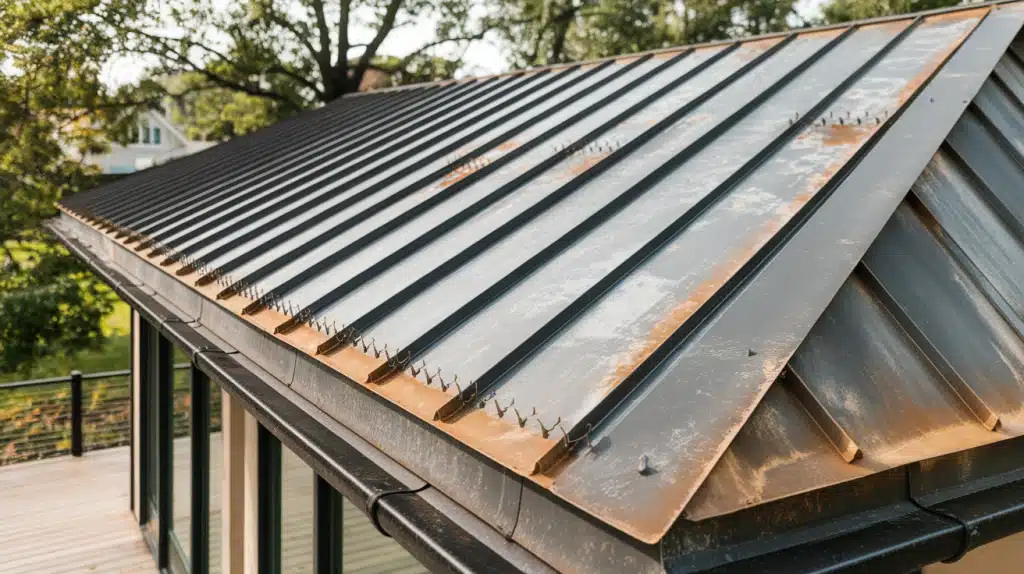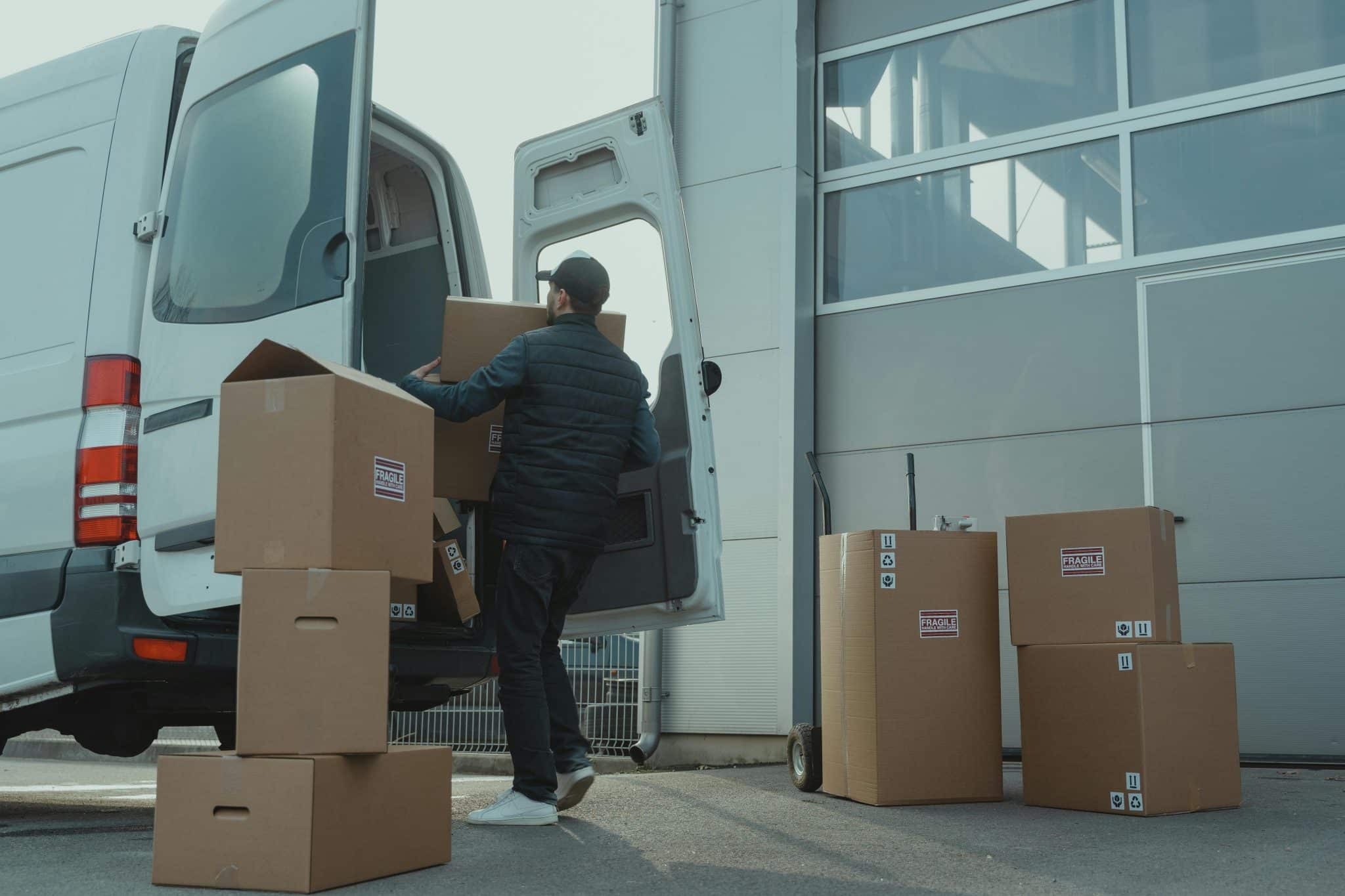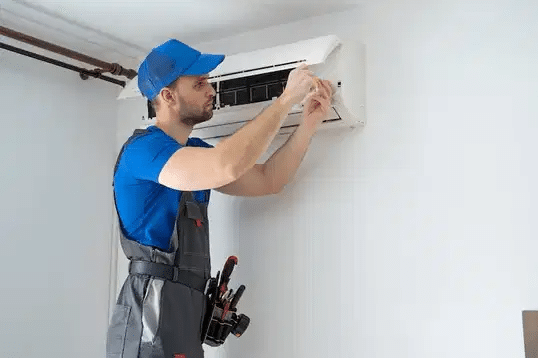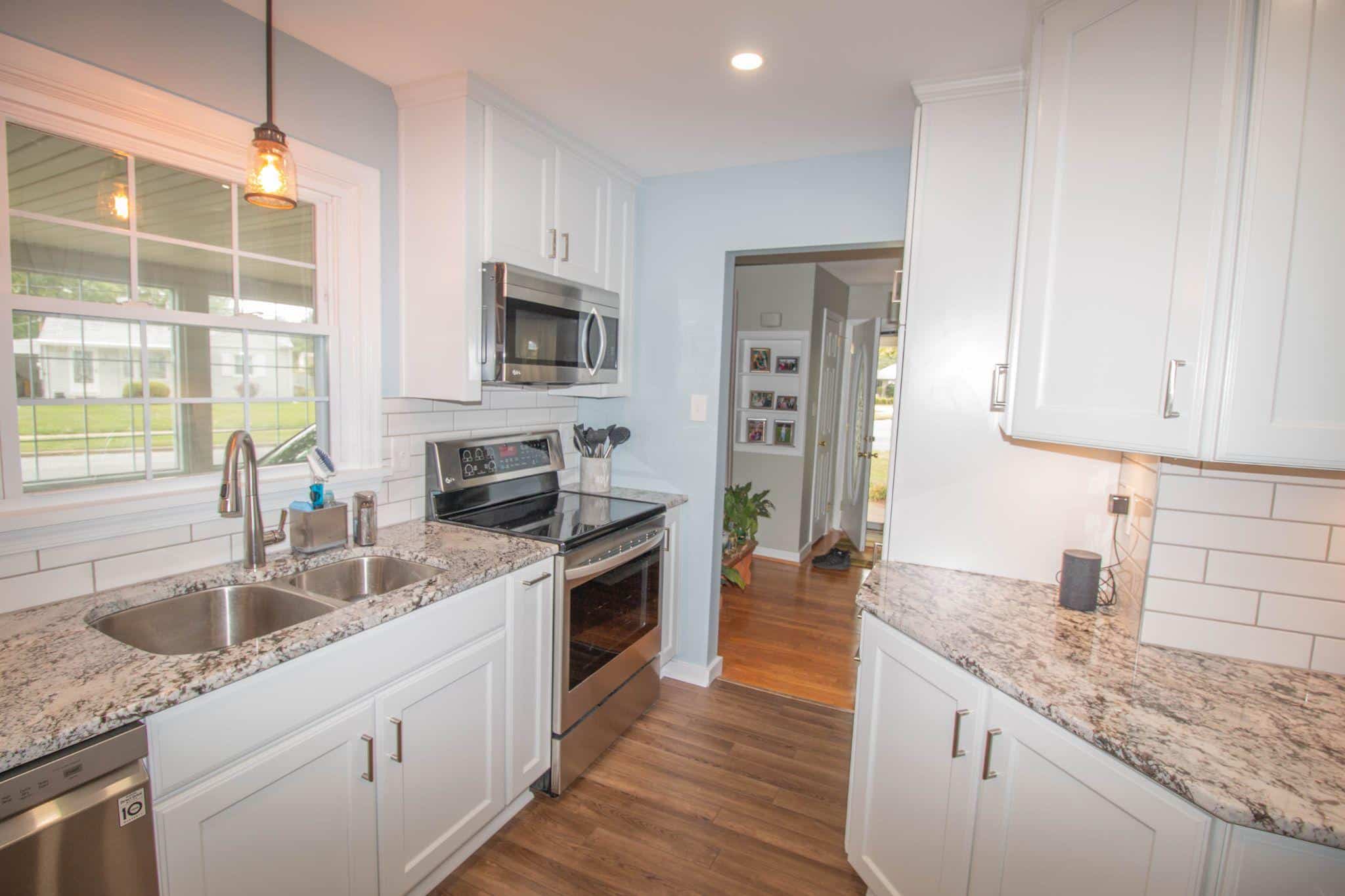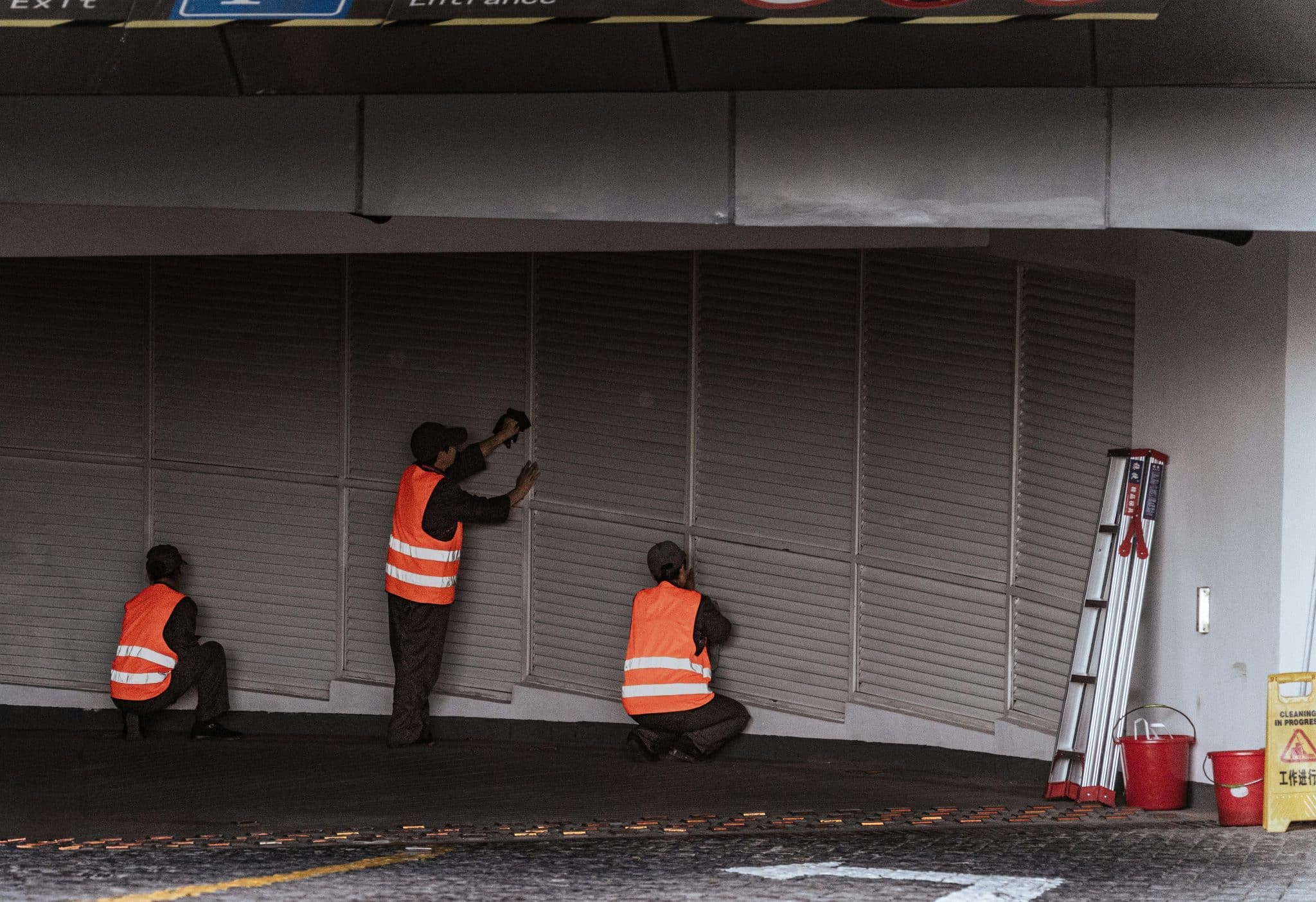Your roof protects everything you value most. But choosing the wrong material could cost you thousands in repairs, high energy bills, and constant maintenance headaches.
Metal roofing has become a topic of conversation in neighborhoods everywhere. Some homeowners swear by their 50-year warranties and energy savings. Others worry about the upfront costs and installation challenges.
So, are metal roofs better than traditional asphalt shingles? The answer depends on your specific situation, budget, and long-term goals.
This guide offers an in-depth overview of metal roofing, covering topics such as durability, energy efficiency, costs, and ideal applications.
You’ll get the facts you need to make an informed decision about the right roofing choice for your home.
What Is a Metal Roof?
A metal roof is a roofing system made from metal pieces or tiles that protects your home from the weather.
These roofs come in three main types: standing seam (flat panels with raised seams), corrugated metal (wavy sheets), and metal shingles (designed to look like traditional shingles).
The most popular materials include steel (strong and affordable), aluminum (lightweight and rust-resistant), copper (a premium option that develops a green patina), and zinc (self-healing and long-lasting).
This variety in types of metal roofs means homeowners can choose styles that match any home design, from sleek modern looks to classic farmhouse appearances.
Metal roofing materials are explained simply: they offer the same protection as traditional roofs, but with more style options and improved performance.
Metal Roof Cost Breakdown
Metal roofing comes with a higher upfront cost than traditional materials, but its long-term value, durability, and energy savings often make it a smart investment for homeowners.
| Cost Element | Estimated Range |
|---|---|
| Material Cost per Sq. Ft. | $3 – $8 |
| Installation Labor per Sq. Ft. | $4 – $8 |
| Total Installed Cost per Sq. Ft. | $8 – $16 |
| Total Cost for 2,000 Sq. Ft. Roof | $16,000 – $32,000 |
| Average Lifespan | 40–70 years |
| Annualized Cost Over 50 Years | $320 – $640/year |
| Maintenance Cost | Low (occasional inspection) |
| Energy Savings | Up to 25% reduction in cooling costs |
| Rebates & Tax Credits | May qualify under federal programs (e.g., IRS Form 5695) |
Top Benefits of Choosing a Metal Roof
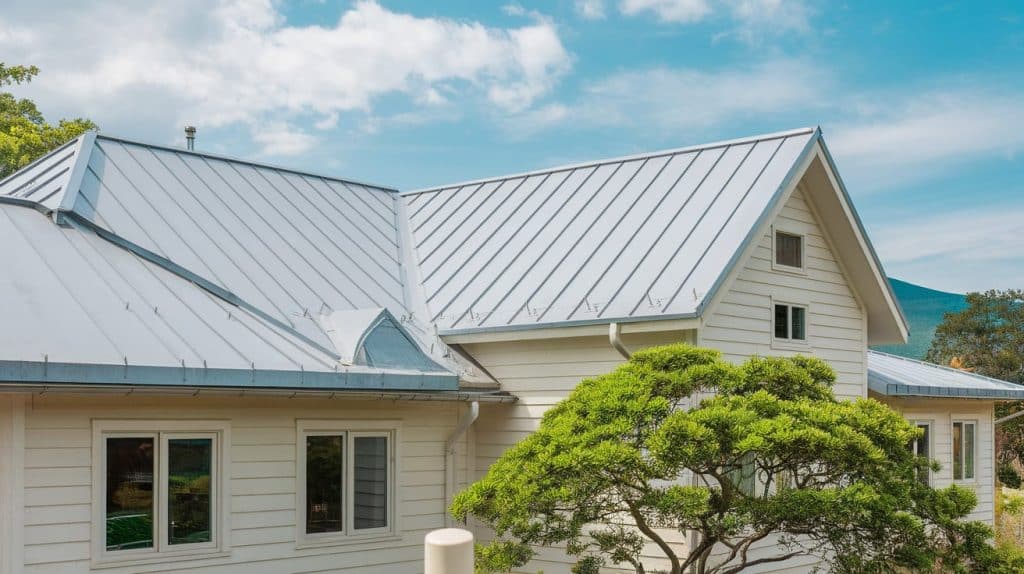
Metal roofs offer a powerful combination of durability, energy efficiency, and low maintenance, making them an increasingly popular choice for homeowners looking for long-term value.
1. Long Lifespan and Durability
Metal roofs are built to last between 40 and 70 years, making them a lifetime investment for most homeowners.
These roofs stand strong against fire, mold, insects, and severe weather conditions, such as hurricanes and hailstorms.
Unlike traditional roofing materials that crack or deteriorate over time, metal maintains its protective qualities for decades.
This exceptional durability means fewer roof replacements and long-term savings for your family.
2. Energy Efficiency
Modern metal roofs feature reflective coatings that bounce sunlight away from your home, keeping indoor temperatures naturally cooler.
This reflection process can reduce your cooling costs by up to 25% during hot summer months. The energy savings add up quickly, especially in warmer climates where air conditioning runs frequently.
Many homeowners notice a noticeable drop in their monthly utility bills after installing metal roofing.
3. Environmentally Friendly
Most metal roofs contain 25% to 95% recycled materials, making them an eco-conscious choice from the start. When your metal roof reaches the end of its long life, it’s 100% recyclable rather than ending up in landfills. This closed-loop recycling process reduces environmental waste and conserves natural resources. Choosing metal roofing supports sustainable building practices while protecting your home.
4. Low Maintenance
Metal roofs require minimal upkeep compared to wood shingles or asphalt that need regular repairs and replacements.
Most metal roofing systems only need occasional visual inspections to check for loose fasteners or debris buildup.
There’s no need for frequent cleaning, sealing, or treating like other roofing materials demand. This hands-off approach saves both time and money on maintenance costs over the years.
5. Lightweight and Easy to Install
Metal roofing weighs 50% to 75% less than traditional materials like clay tiles or concrete, reducing structural stress on your home.
This lightweight nature means existing roof structures can often support metal without additional reinforcement.
In many cases, metal roofing can be installed directly over your existing roof, saving the costs of removal and disposal. Professional installation is typically faster and less disruptive to your daily routine.
Drawbacks of Metal Roofs You Should Consider
While metal roofs offer impressive benefits, they also come with certain drawbacks, such as higher upfront costs and installation challenges, that homeowners should weigh before making a decision.
1. Higher Initial Cost
Metal roofing costs 2 to 3 times more than standard asphalt shingles, making it a significant upfront investment.
A typical metal roof installation can range from $8,000 to $20,000 or more, depending on your home size and material choice.
Many homeowners need to consider financing options or long-term budgeting to afford the initial expense. However, the higher cost often pays for itself through energy savings and durability over time.
2. Noise from Rain and Hail
Metal roofs can be noticeably louder during rainstorms and hail compared to asphalt or wood roofing materials.
Without proper insulation, the sound of raindrops hitting metal can be disruptive inside your home. This noise issue can be reduced with solid sheathing and quality insulation installed beneath the metal panels.
Many modern installations include sound-dampening materials that make metal roofs as quiet as traditional options.
3. Vulnerability to Denting
Large hail, falling tree branches, or heavy debris can cause cosmetic dents on metal roofing surfaces.
Aluminum and copper roofs are more prone to denting than steel options due to their softer metal composition.
While dents rarely affect the roof’s protective function, they can impact your home’s appearance and resale value. Some insurance policies may cover hail damage, but prevention through material choice is often the best approach.
4. Color Matching and Fading Issues
Metal roof color coatings can fade or chalk over 15-20 years, especially in areas with intense sun exposure.
When repairs or additions are needed, new panels may not perfectly match the weathered color of existing roofing.
This color variation can create visible patches that affect the uniform appearance of your home. Choosing high-quality paint systems and neutral colors can help minimize fading problems over time.
5. Specialized Installation Required
Metal roofing installation requires specific skills and experience that not all roofing contractors possess.
Fewer qualified installers are available compared to traditional roofing materials, which can limit your options and timing.
Poor installation can result in leaks, loose panels, and energy inefficiency that defeat the benefits of metal roofing.
Always verify contractor credentials and ask for references from previous metal roofing projects before hiring.
Ideal Situations for Installing a Metal Roof
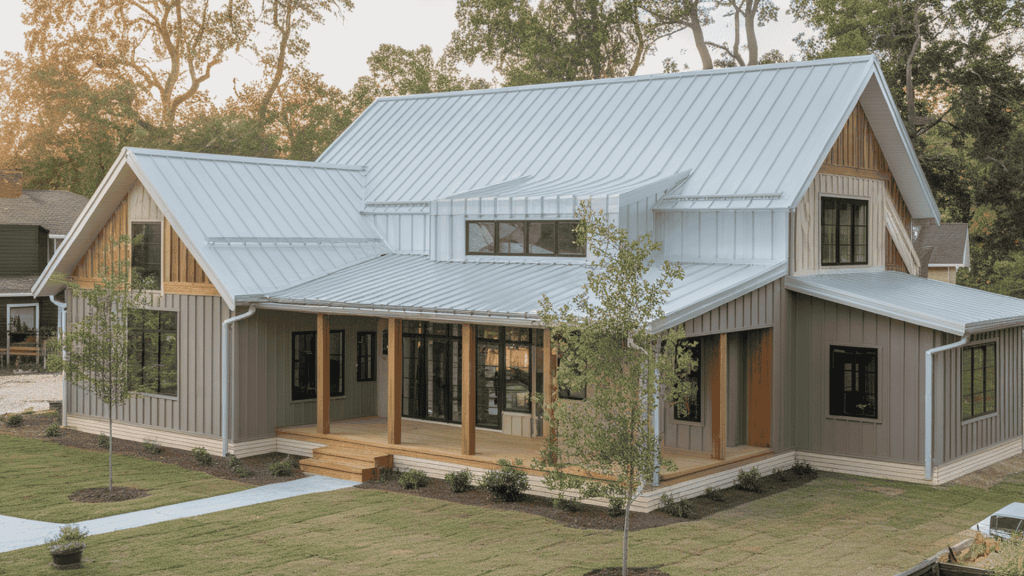
- Hurricane zones: Metal roofs withstand high winds up to 140 mph and resist water damage from heavy storms.
- Snowy climates: The smooth surface allows snow to slide off easily, preventing dangerous ice dams and roof collapse.
- Wildfire-prone areas: Metal roofing is completely fire-resistant and won’t ignite from flying embers or direct flames.
- Long-term homeowners: The 40-70 year lifespan makes metal roofs perfect for families planning to stay in their homes for decades.
- Eco-conscious buyers: Made from recycled materials and fully recyclable, metal roofs support sustainable living goals.
- Modern home styles Feature Clean lines and sleek profiles that complement contemporary architectural designs perfectly.
- Farmhouse-style homes: Standing seam and corrugated options provide the rustic look that matches country home styles.
Final Verdict
Metal roofs offer impressive benefits, including a lifespan of 40-70 years, energy savings of up to 25%, and fire resistance that protects your family.
However, the higher upfront costs and specialized installation requirements may not be suitable for everyone.
Metal roofs are best suited for those who plan to stay in their home long-term, live in harsh weather zones, or prioritize eco-friendly materials.
The investment pays off through decades of low maintenance and reduced energy bills.
Before making a decision, obtain quotes from certified metal roofing contractors in your area. Compare the total lifetime costs, not just initial prices.
What’s your experience with metal roofing? Share your thoughts in the comments below!
Designing your dream outdoors? Explore more exterior design inspiration and tips.
Frequently Asked Questions
Is a Metal Roof Really Worth It?
Yes, metal roofs are worth it for long-term homeowners due to their 40-70 year lifespan and energy savings that offset the higher initial cost.
Is It Better to Have a Metal Roof or Shingles?
Metal roofs are more durable and energy-efficient, while asphalt shingles are better suited for budget-conscious homeowners who prefer lower upfront costs.
What Are the Two Biggest Concerns of a Metal Roof?
The two biggest concerns are the higher initial cost (2-3 times more than asphalt) and potential noise during rainstorms without proper insulation.
Why Do Insurance Companies Not Like Metal Roofs?
Insurance companies actually favor metal roofs because they’re fire-resistant and wind-resistant, often offering discounts of 5-15% on premiums for metal roofing installations.

